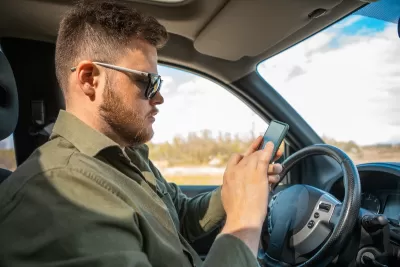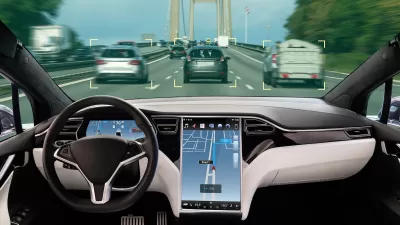Despite warnings that drivers should remain attentive, people behind the wheel of cars equipped with ‘autonomous’ assistance often take their eyes off the road.

A study from the Insurance Institute for Highway Safety (IIHS) and Massachusetts Institute of Technology (MIT) reveals that drivers using cars with automation software are more likely to engage in distracting behaviors. “Although most automakers advertise their driver assistance software packages as a convenient tool to make driving less of a chore, abuse is known to be common.”
The study tested Volvo’s Pilot Assist and Tesla’s Autopilot systems, explains William Gavin in an article in Quartz. “Drivers were distracted more than 30% of the time they used Pilot Assist, the IIHS found.”
In Tesla’s case, drivers learned how to placate the steering wheel sensor that detects the driver’s hands without changing their behavior. “The IIHS noted that the longer drivers used Autopilot, the less time it took for them to take their hands of the wheel after the alerts stopped.” According to IIHS President David Harkey, “If you train [people] to think that paying attention means nudging the steering wheel every few seconds, then that’s exactly what they’ll do.”
Gavin notes that both the Volvo and Tesla systems received a “poor” safety rating from the IIHS earlier this year.
FULL STORY: Drivers using tech like Tesla's Autopilot are more likely to goof off, study says

Trump Administration Could Effectively End Housing Voucher Program
Federal officials are eyeing major cuts to the Section 8 program that helps millions of low-income households pay rent.

Planetizen Federal Action Tracker
A weekly monitor of how Trump’s orders and actions are impacting planners and planning in America.

Ken Jennings Launches Transit Web Series
The Jeopardy champ wants you to ride public transit.

California Invests Additional $5M in Electric School Buses
The state wants to electrify all of its school bus fleets by 2035.

Austin Launches $2M Homelessness Prevention Fund
A new grant program from the city’s Homeless Strategy Office will fund rental assistance and supportive services.

Alabama School Forestry Initiative Brings Trees to Schoolyards
Trees can improve physical and mental health for students and commnity members.
Urban Design for Planners 1: Software Tools
This six-course series explores essential urban design concepts using open source software and equips planners with the tools they need to participate fully in the urban design process.
Planning for Universal Design
Learn the tools for implementing Universal Design in planning regulations.
Ada County Highway District
Clanton & Associates, Inc.
Jessamine County Fiscal Court
Institute for Housing and Urban Development Studies (IHS)
City of Grandview
Harvard GSD Executive Education
Toledo-Lucas County Plan Commissions
Salt Lake City
NYU Wagner Graduate School of Public Service





























